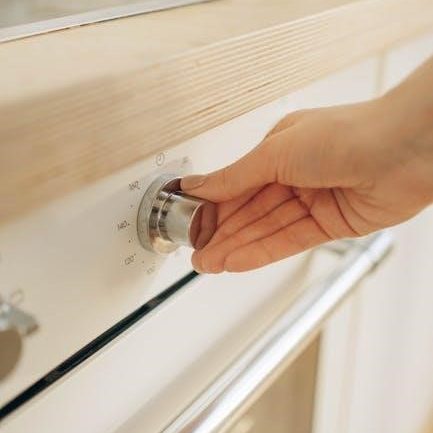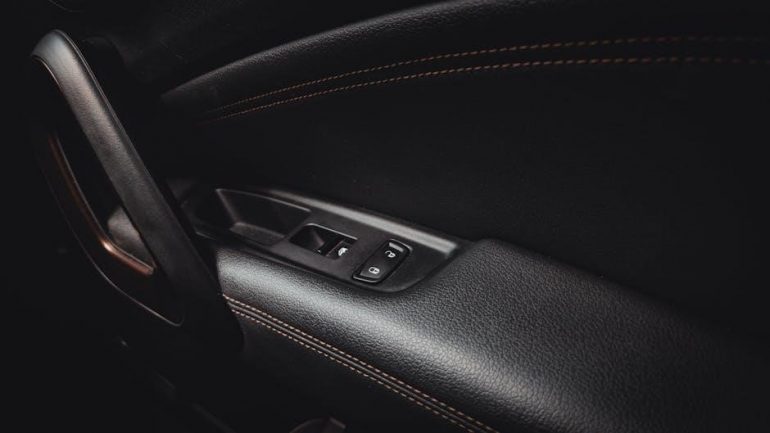The Irritrol Rain Dial series is a popular choice for efficient irrigation, offering durability and user-friendly features. It supports automatic, semi-automatic, and manual modes, with compatibility for remote controls and sensors, ensuring reliable operation in various conditions.
1.1 Overview of the Rain Dial Controllers
The Rain Dial controllers are a series of irrigation systems designed for flexibility and efficiency. These controllers are known for their user-friendly interface and robust features, making them suitable for both residential and small commercial applications. The Rain Dial series includes models like the Rain Dial-R, which is remote-ready and compatible with sensors such as the RS500 and RFS1000, enhancing functionality by adapting to weather conditions. These controllers support Automatic, Semi-Automatic, and Manual modes, offering precise control over watering schedules. The Rain Dial series is designed with a modular structure, allowing easy access to wiring terminals and simple module removal for programming. Their durability and ease of use have made them a popular choice for homeowners and professionals alike, ensuring reliable performance season after season.
1.2 Importance of the Manual for Effective Use
Understanding and utilizing the Irritrol Rain Dial manual is essential for maximizing the potential of your irrigation controller. The manual provides detailed guidance on installation, programming, and troubleshooting, ensuring that users can navigate the system’s features confidently. It explains how to set up custom watering schedules, adjust water budgets, and operate in Manual, Semi-Automatic, or Automatic modes. Without the manual, users may miss critical steps or misconfigure settings, leading to inefficient water use or system malfunctions. The manual also covers compatibility with sensors and remote controls, which are key for adapting to weather conditions and enhancing convenience. By following the manual, users can avoid common errors and ensure their irrigation system operates efficiently, preserving water and maintaining healthy landscaping. It serves as a comprehensive resource for both initial setup and ongoing maintenance, making it indispensable for optimal performance.

Installation Guide for Irritrol Rain Dial
Install your Irritrol Rain Dial controller by following step-by-step instructions. Mount the unit, connect wires to valves, and set the clock. Ensure compatibility with sensors and remote controls for seamless operation.
2.1 Understanding the Hardware Components
The Irritrol Rain Dial controller consists of a central unit with a dial, display, and buttons for navigation. Key components include the control panel, wiring terminals, and sensor ports. The dial allows easy navigation between settings, while the display shows current status and programming details. The Manual and Semi-Auto buttons enable mode switching. Wiring terminals connect to valves, and sensor ports link to rain or freeze sensors. Remote control compatibility enhances convenience. The controller also includes a battery compartment for power backup. Understanding these components ensures proper installation and operation. Familiarize yourself with each part to maximize efficiency and customization of your irrigation system.
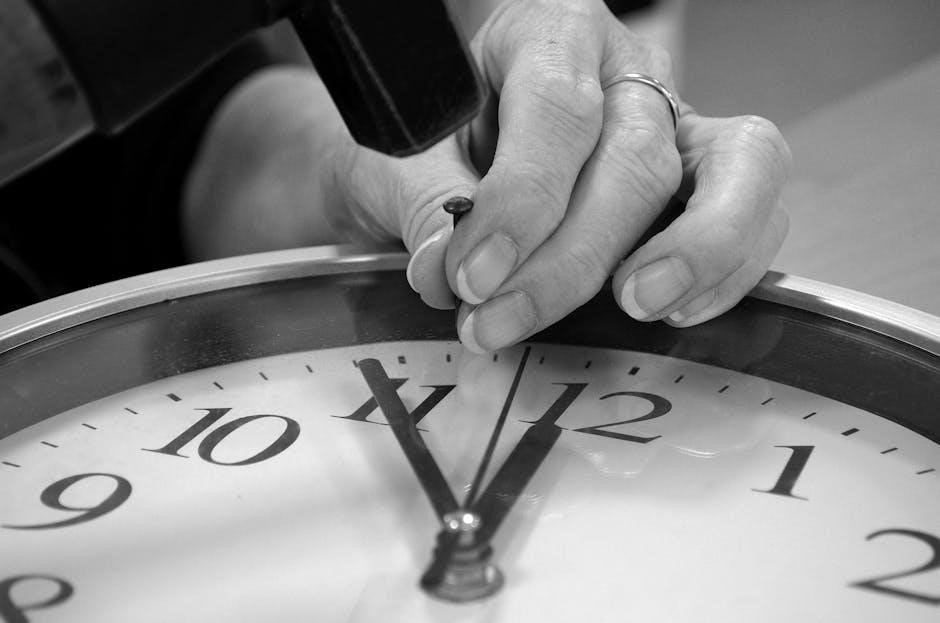
2.2 Step-by-Step Installation Instructions
Begin by selecting a suitable location for the controller, ensuring protection from direct sunlight and moisture. Mount the unit on a wall using screws or anchors. Next, connect the valve wires to the corresponding terminals, matching each valve to its zone. Install the battery for backup power and attach sensors to the designated ports. Power on the controller and perform a test cycle to verify all valves operate correctly. Follow the manual for specific wiring diagrams and safety precautions to ensure a smooth setup.
2.3 Initial Setup and Configuration
After installation, power on the controller and set the current time and date by pressing the Manual button to cycle through the options. Use the dial to adjust the time and date accurately. Familiarize yourself with the dial’s operation, as it switches between Automatic, Semi-Automatic, and Manual modes. For initial setup, ensure the controller is in Manual mode to test valve operations. Press the Manual button to step through each station, verifying proper activation. Configure the station sequence by pressing and holding the Manual button until the display shows the first station number. Use the dial to select the desired sequence. Adjust the Water Budget if needed using the + and ‒ buttons. Finally, test all stations to ensure proper operation and make any necessary adjustments. This setup ensures your irrigation system runs efficiently from the start.
2.4 Connecting Sensors and Remote Controls
Connect compatible sensors like the RS500, RS1000, or RFS1000 rain/freezing sensors to the controller to enable automatic watering adjustments based on weather conditions. These sensors help prevent unnecessary watering during rain or freezing temperatures. For remote control compatibility, the Rain Dial-R works seamlessly with Irritrol Handheld Remote Control models, such as the KSR-KIT. To pair the remote, ensure the controller is in Manual mode and press the remote’s sync button. The display will confirm the connection. Sensors and remotes enhance the system’s functionality, allowing you to manage watering schedules and valve operations conveniently. Always refer to the specific sensor or remote model’s instructions for detailed pairing steps. Proper integration ensures efficient and tailored irrigation management for your landscape.
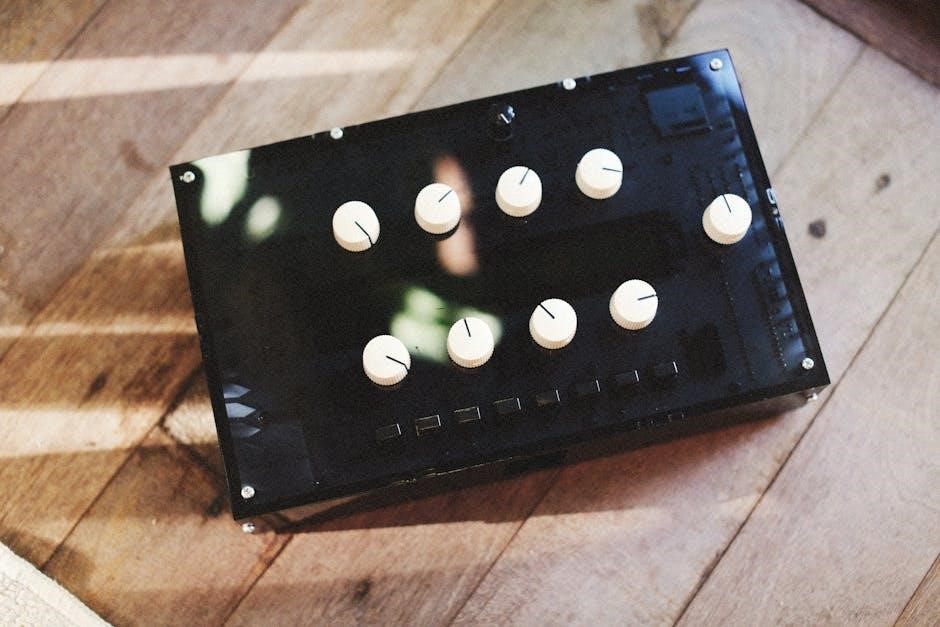
Programming Your Irritrol Rain Dial Controller
Program your Rain Dial controller to customize watering schedules, adjust water budgets, and utilize modes like semi-automatic or manual operation. This ensures efficient irrigation tailored to your landscape’s needs.
3.1 Setting the Clock and Calendar
3.2 Creating Custom Watering Schedules
3.3 Adjusting Water Budget Settings
Adjusting the Water Budget on your Rain Dial controller allows you to customize water usage efficiently. Access the feature by turning the dial to the Water Budget option and pressing the Manual button. Use the +/− buttons to increase or decrease the budget percentage (0% to 200%). This setting adjusts the runtime for all programmed zones proportionally. If sensors like the Rain/Freeze sensor are connected, they may override the budget based on weather conditions. Ensure the budget aligns with soil and plant needs. After adjustments, press Manual to save changes. This feature helps optimize water usage without affecting programmed schedules, ensuring plants receive the right amount of moisture. Always refer to the manual for advanced tips on using sensors with the water budget feature for maximum efficiency.
3.4 Using Semi-Automatic Mode
The Semi-Automatic Mode on your Rain Dial controller offers flexibility, allowing you to manually advance through programmed zones while maintaining scheduled settings. To activate this mode, turn the dial to the desired zone and press the Semi-Auto button. The controller will run the selected zone automatically. You can press the Manual button to pause or advance to the next zone. This mode is ideal for inspecting or adjusting individual zones without altering the overall schedule. To exit, press the Stop button or let the cycle complete. Semi-Automatic Mode ensures precise control while maintaining the convenience of programmed watering schedules. For additional customization, pair this mode with sensors like the Rain/Freeze sensor to optimize water usage. Always refer to the manual for detailed instructions on using this feature effectively.
3;5 Manual Mode Programming
Manual Mode allows you to run individual zones or valves immediately without altering the programmed schedule. To access this mode, turn the dial to the desired valve number and press the Manual button. The display will show the valve number, an “M” for manual mode, and the remaining runtime. You can adjust the runtime by pressing the Manual button again. This mode is ideal for quick watering or testing zones. To stop watering early, press the Stop button. Manual Mode does not affect your programmed watering schedule, making it a convenient option for one-time adjustments. For further customization, consider pairing this mode with sensors like the Rain/Freeze sensor to enhance water conservation. Always refer to the manual for detailed instructions on optimizing this feature for your specific needs.

Manual Mode Operations
Manual Mode enables immediate control over individual valves or zones without altering programmed schedules. Use the dial to select the desired valve, then press the Manual button to activate watering. The Stop function halts watering instantly, preserving your set programs for future use.
4.1 Valve Operation in Manual Mode
When operating the Irritrol Rain Dial in Manual Mode, users can directly control individual valves or zones. To activate a valve, simply turn the dial to the desired valve number. The display will show the selected valve number, an M indicating manual operation, and the remaining time the valve will run. This feature allows for precise control over watering without altering programmed schedules. The Stop function can be used to immediately halt watering activity, ensuring no disruption to your programmed irrigation plans. Manual mode is ideal for quick adjustments or testing valve functionality. Always ensure the controller is in manual mode before making valve adjustments to avoid unintended changes to automatic schedules.
4.2 Using the Stop Function
The Stop function on the Irritrol Rain Dial controller is a convenient feature that immediately halts all watering activity without affecting programmed schedules. This is particularly useful if you need to interrupt the irrigation cycle due to unexpected weather changes, pedestrian traffic, or maintenance. To use the stop function, simply press the designated Stop button on the controller. The display will confirm the action, and all valve operations will cease until the next scheduled program or manual intervention. Importantly, the Stop function does not cancel or modify existing programs, ensuring your irrigation plans remain intact. This feature provides flexibility and peace of mind, allowing you to manage your watering system efficiently. Always remember that the stop function is temporary and does not disable automatic operations unless manually overridden. It is a practical solution for unexpected interruptions while maintaining your landscape’s watering needs.
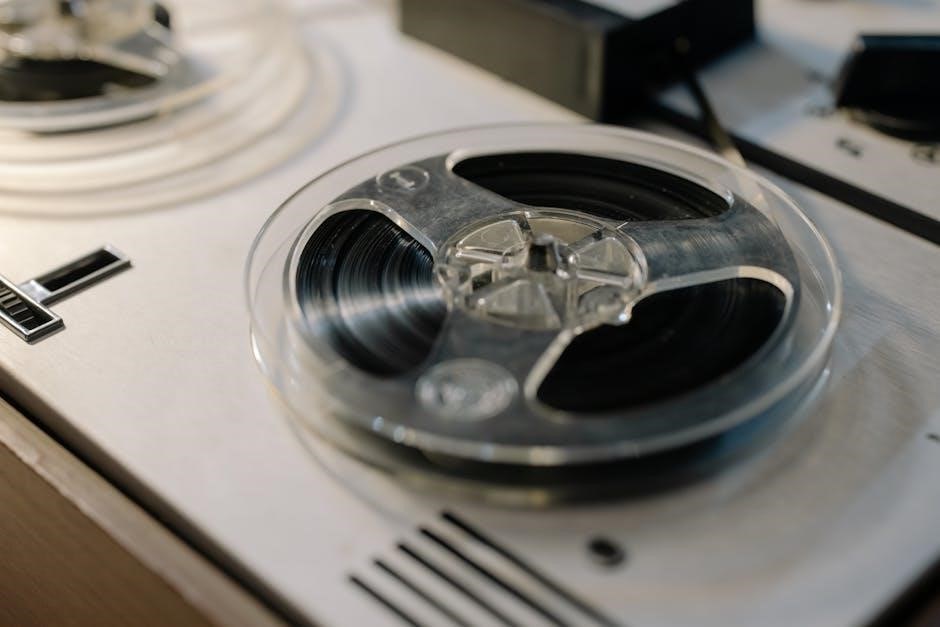
Remote Control Compatibility
The Irritrol Rain Dial series is remote-ready, compatible with Irritrol’s handheld remote models, including KSR-KIT for close-range control. Pairing the remote enhances convenience, allowing easy adjustments without physical access to the controller.
5.1 Overview of Compatible Remote Models
The Irritrol Rain Dial series is designed to work seamlessly with specific remote control models, enhancing user convenience. The primary compatible remote is the KSR-KIT, a handheld remote designed for close-range residential use. This remote allows users to control irrigation functions without needing physical access to the controller. Additional compatible models may include older or specialized remotes, ensuring backward compatibility for users with existing systems. The remote functionality enables easy activation of manual modes, adjustment of watering schedules, and immediate stopping of irrigation cycles. For optimal performance, it is recommended to use remotes specifically designed for the Rain Dial series to ensure full compatibility and avoid potential operational issues. Always refer to the official Irritrol manual for a comprehensive list of approved remote models and pairing instructions.
5.2 Pairing the Remote with the Controller
Pairing the remote with your Irritrol Rain Dial controller is a straightforward process that enhances convenience. Ensure the controller is in a compatible mode and the remote is within range. Press and hold the Manual button on the controller while simultaneously pressing the remote’s activation button. Release both buttons when the display confirms pairing. The remote will now control irrigation functions such as manual mode activation and program adjustments. For optimal performance, ensure the remote is fully charged and within the specified range. If issues arise, refer to the official Irritrol manual for troubleshooting steps. The remote pairing feature allows seamless control of your irrigation system, making it easier to manage watering schedules and manual overrides. Always test the remote after pairing to ensure proper functionality.
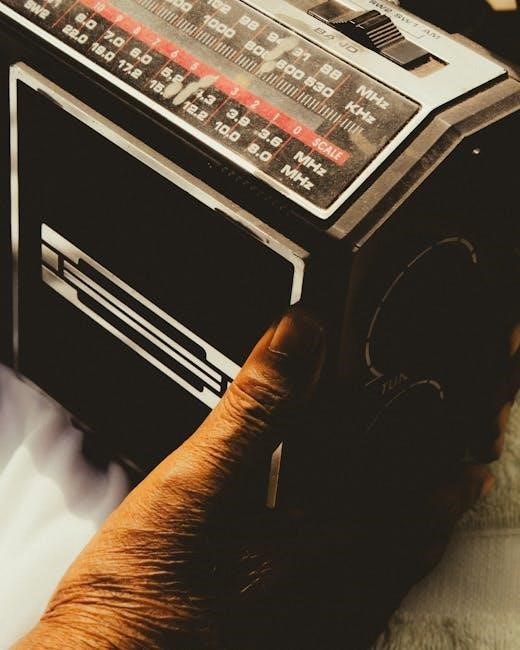
Troubleshooting Common Issues
Identify issues by checking error codes or irregular operation. Ensure sensors are connected properly and test manual mode functionality. Refer to the manual for detailed solutions to restore optimal performance quickly.
6.1 Identifying and Solving Common Problems
Common issues with the Irritrol Rain Dial include incorrect watering schedules, sensor malfunctions, and communication errors. Start by checking the display for error codes, which provide clues about the problem. For example, if the controller fails to activate valves, verify that wires are securely connected and not damaged. If the system doesn’t respond to manual mode, ensure the dial is correctly positioned and the manual button is functioning. Sensor-related issues can often be resolved by cleaning or replacing the sensor. Additionally, ensure the controller is properly configured with the correct date and time. Refer to the troubleshooting section in the manual for step-by-step solutions, or reset the controller to factory settings as a last resort. Regular maintenance and seasonal checks can prevent many of these issues from arising. Always consult the user guide for detailed instructions and solutions.
6.2 Understanding Error Codes
The Irritrol Rain Dial controller displays error codes to help diagnose issues. Codes like E1 or E2 typically indicate problems with sensor connections or activation. If the controller shows an error, refer to the manual for specific explanations. For example, an E3 code may signify a wiring issue, while an E4 could point to a water budget mismatch. To resolve these, check sensor compatibility, ensure proper wiring, or reset the controller if necessary. Some codes may require adjusting settings, like recalibrating the water budget or synchronizing the clock. Understanding these codes allows for quick troubleshooting, minimizing downtime. Always consult the user guide for detailed explanations and solutions to ensure optimal performance. Regular maintenance can also help prevent error codes from occurring. By addressing these issues promptly, you can maintain efficient irrigation and extend the lifespan of your controller;

Maintenance and Care Tips
Regular cleaning of the controller ensures optimal performance. Wipe the exterior and terminals with a soft cloth. Perform seasonal checks of the battery and wiring to prevent malfunctions during peak usage. Maintain proper humidity levels to avoid damage. Schedule annual inspections of sensors and connections for reliable operation. Replace worn-out parts promptly to extend the system’s lifespan. Store the controller in a dry, cool place during off-seasons to protect against corrosion. Follow the manufacturer’s guidelines for battery replacement and software updates. Proper care ensures your Irritrol Rain Dial operates efficiently year-round, delivering consistent irrigation results for your landscape.
7.1 Cleaning the Controller
Regular cleaning of the Irritrol Rain Dial controller is essential for maintaining its performance and longevity. Use a soft, dry cloth to wipe down the exterior, ensuring no dirt or debris accumulates on the surface. For the interior, dampen a cloth slightly but avoid using harsh chemicals or excessive moisture, which could damage the electronics. Gently clean the display screen with a microfiber cloth to prevent smudges and ensure visibility. Additionally, inspect and clean the terminals and connections periodically to remove any corrosion or dust. Use a soft-bristle brush to gently sweep away debris from the terminals. Avoid submerging the controller in water or exposing it to high humidity. Regular cleaning prevents malfunctions and ensures smooth operation. Always unplug the controller before cleaning to avoid any risk of electrical damage. By maintaining a clean unit, you can ensure accurate programming and reliable irrigation control. This simple maintenance step is crucial for optimal functionality and extending the lifespan of your controller.
7.2 Seasonal Maintenance Checks
Performing seasonal maintenance checks on your Irritrol Rain Dial controller ensures optimal performance year-round. Before extreme weather conditions, inspect the controller and connected sensors for any damage or wear. Clean the rain and freeze sensors to guarantee accurate moisture detection. Check the wiring for signs of corrosion or damage, and secure any loose connections. Update the water budget settings to align with seasonal watering needs, adjusting run times as necessary. Test all stations manually to confirm proper operation and address any issues promptly. Disconnect power before performing internal inspections or repairs. Regularly check the battery level and replace it if needed to prevent unexpected shutdowns. By conducting these checks, you can ensure reliable irrigation control and extend the lifespan of your controller. Seasonal maintenance is a critical step in maintaining your irrigation system’s efficiency and effectiveness. Always refer to the user manual for specific instructions tailored to your model.
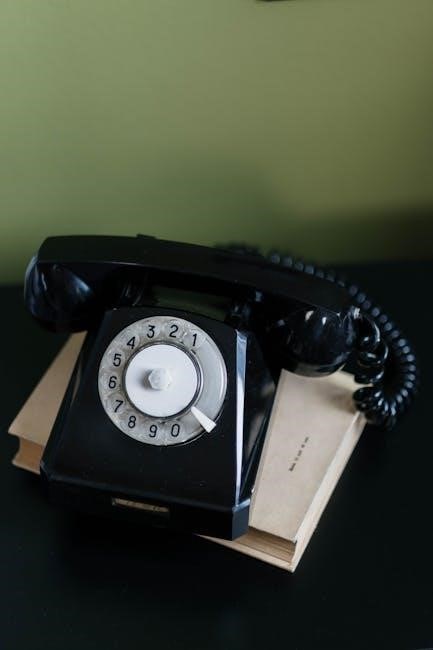
The Irritrol Rain Dial series offers a reliable, efficient irrigation solution. With features like manual, semi-auto, and automatic modes, it adapts to various needs. Regular maintenance ensures longevity and optimal performance. Follow the manual for best results.
8.1 Summary of Key Features

The Irritrol Rain Dial series stands out for its versatility and advanced features. It supports automatic, semi-automatic, and manual irrigation modes, catering to diverse watering needs. The controller is remote-ready, compatible with Irritrol’s handheld remotes, allowing convenient operation from a distance. Additionally, it integrates seamlessly with rain and freeze sensors, ensuring water conservation by halting irrigation during unfavorable conditions. The user-friendly interface simplifies programming, with options to set custom watering schedules and adjust water budgets. Its robust design and modular components ensure easy maintenance and longevity. Whether for residential or small commercial use, the Rain Dial series delivers reliable performance, making it a trusted choice for efficient irrigation management. These features collectively enhance user experience, providing precise control over irrigation systems.
8.2 Final Tips for Optimal Use
To maximize the performance of your Irritrol Rain Dial controller, regularly inspect and clean the unit to ensure proper function. Always pair it with compatible sensors, like rain or freeze sensors, to optimize water conservation. Adjust watering schedules seasonally to match plant needs and weather conditions. Utilize the manual mode for quick, one-time adjustments without disrupting programmed schedules. Keep the controller protected from extreme temperatures and moisture to maintain longevity. Refer to the user manual for advanced features and troubleshooting guidance. For added convenience, consider pairing the controller with an Irritrol remote control to manage irrigation from anywhere. Finally, perform seasonal maintenance checks to ensure all wiring and connections are secure. By following these tips, you can ensure your irrigation system operates efficiently, conserves water, and keeps your landscaping thriving year-round.
